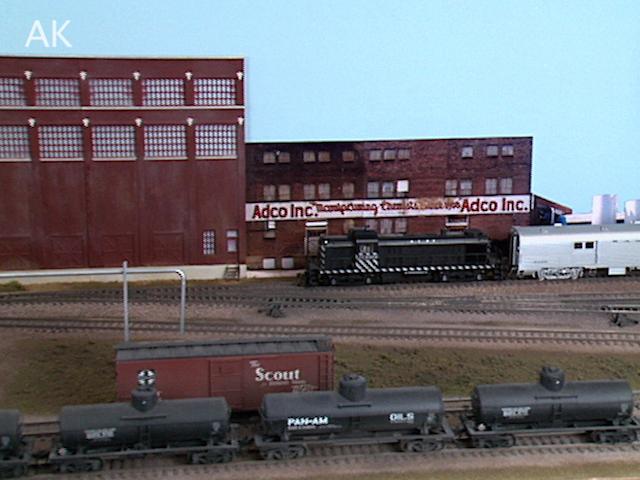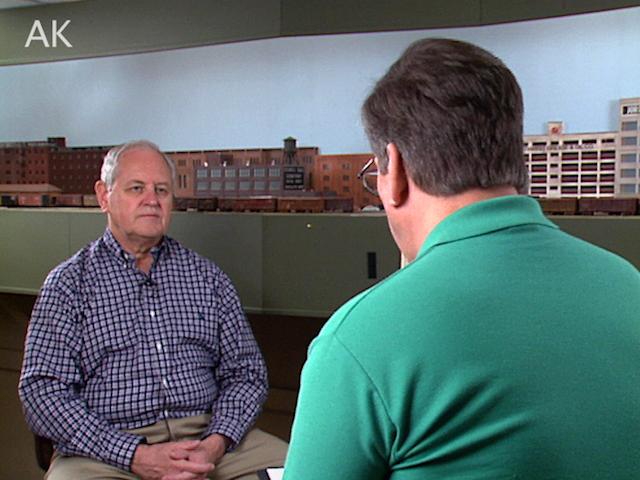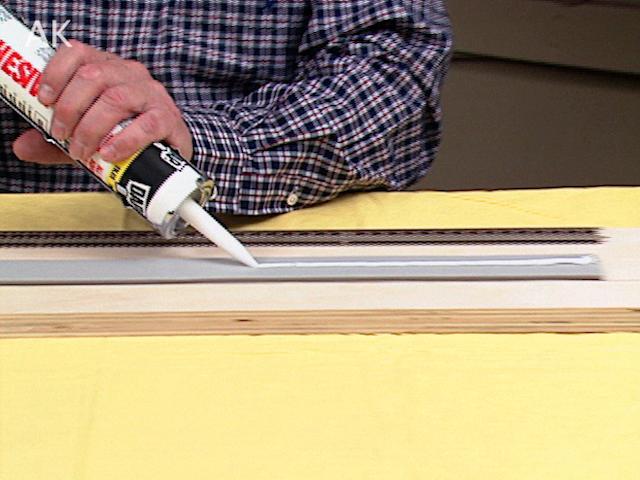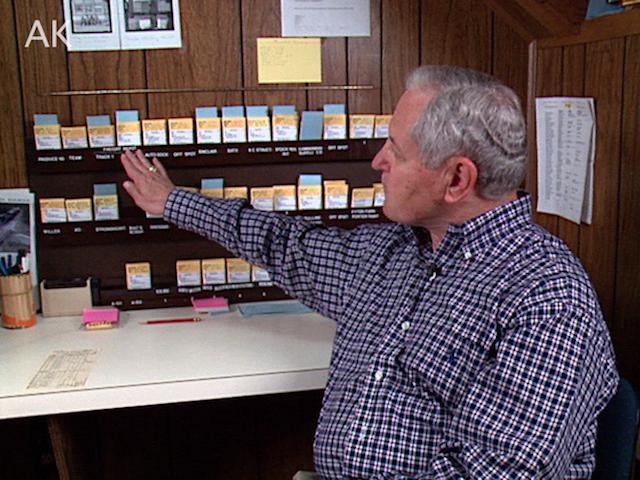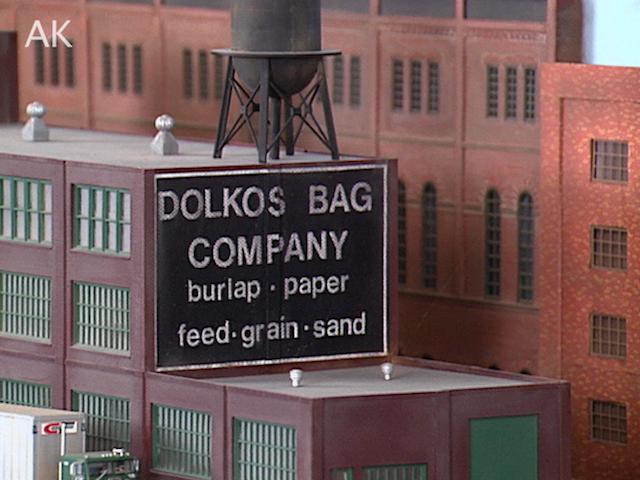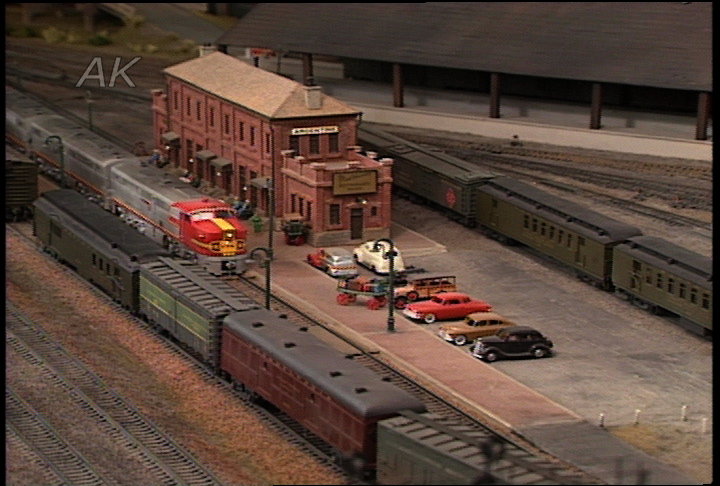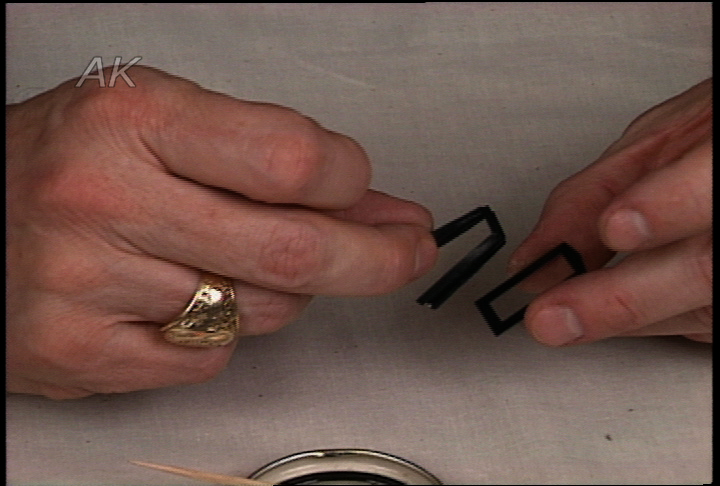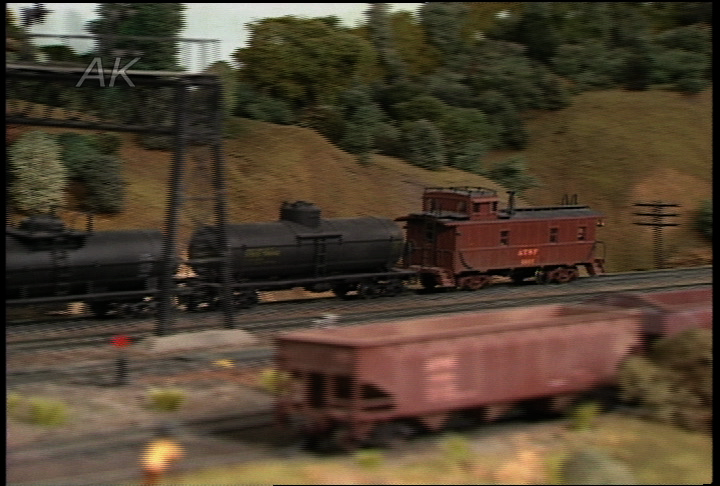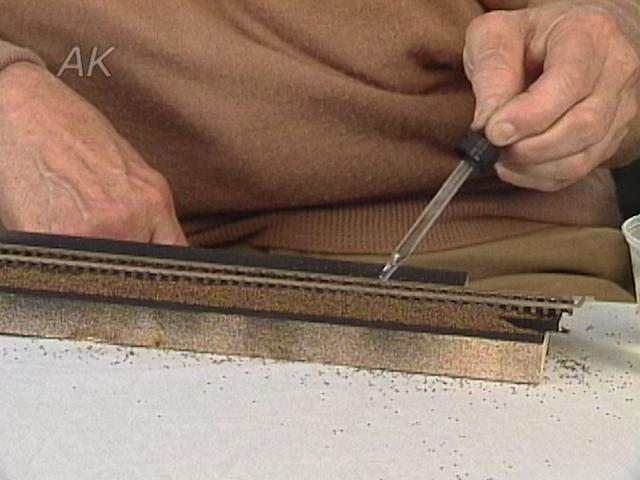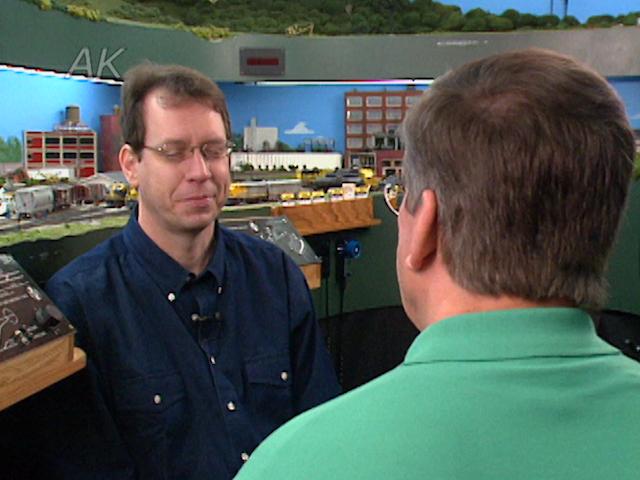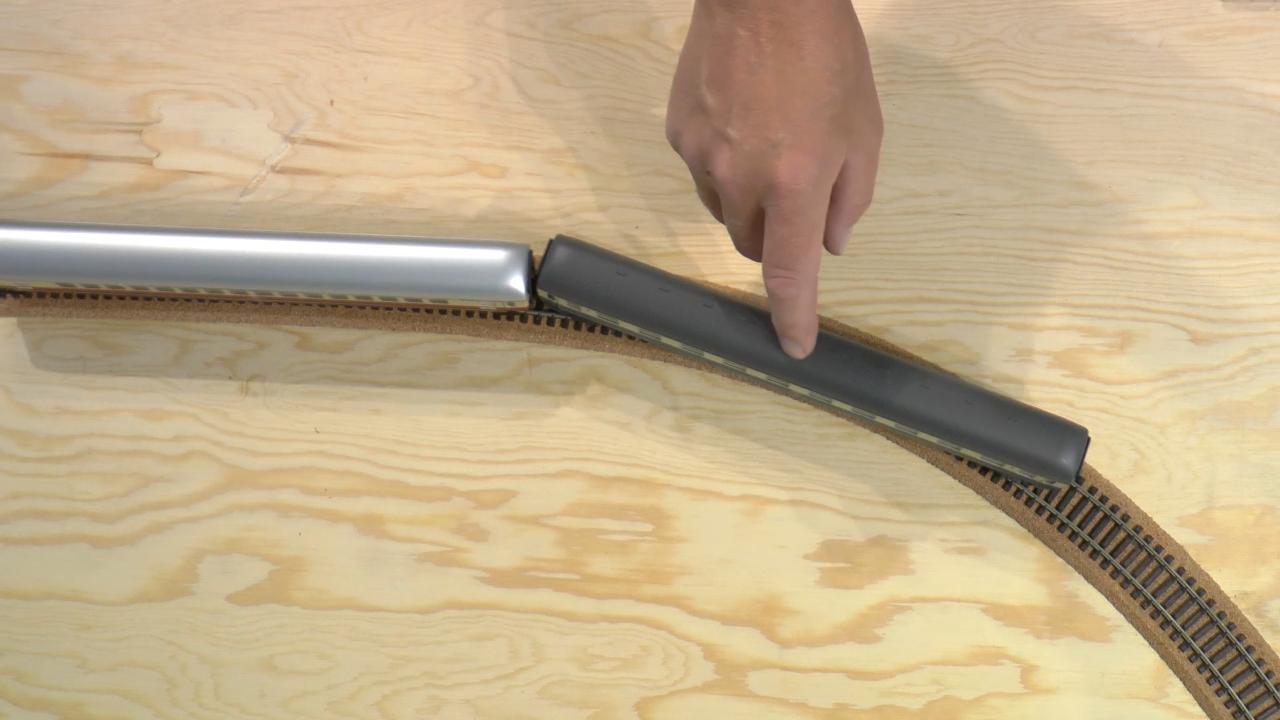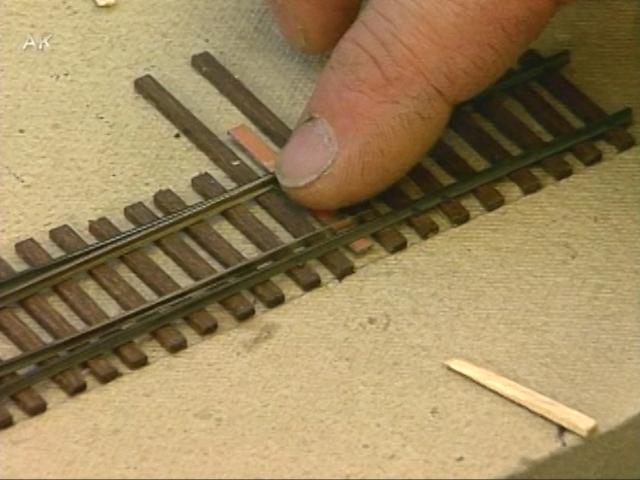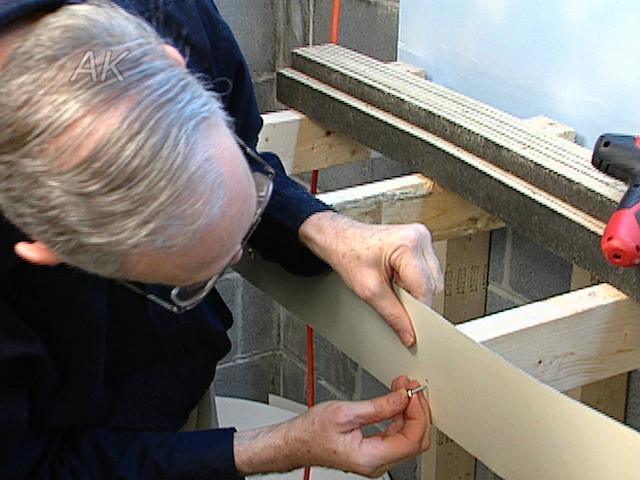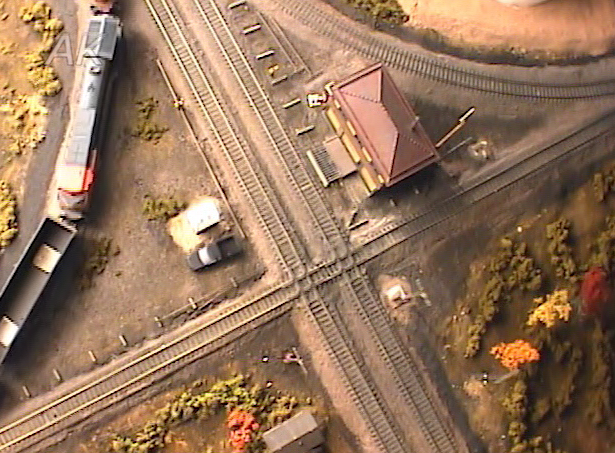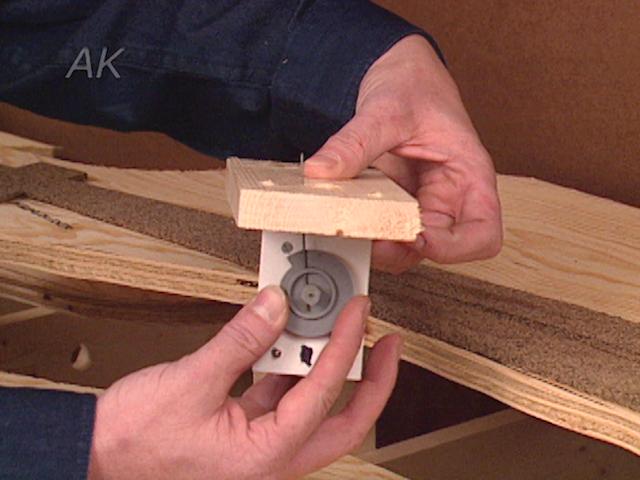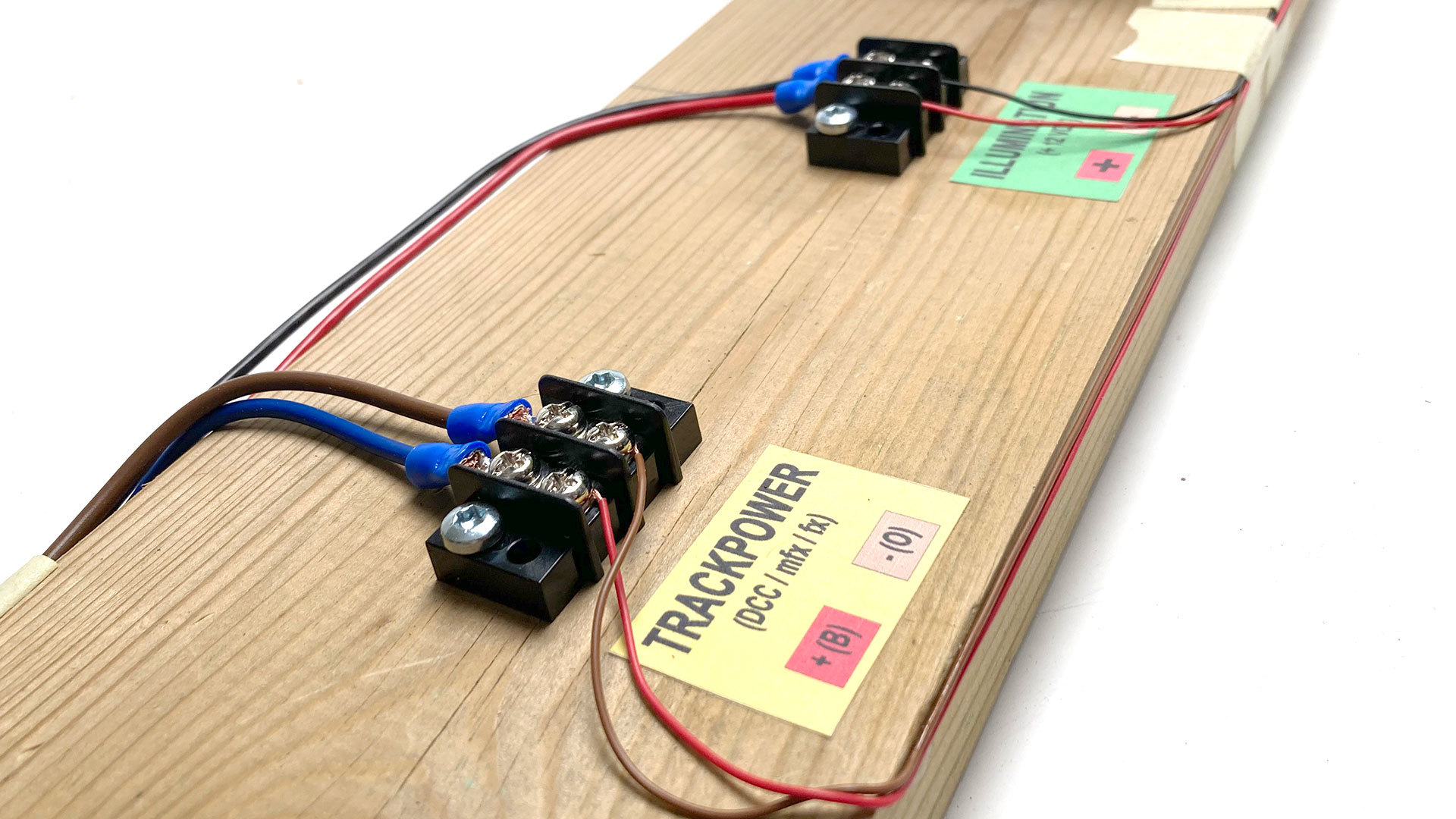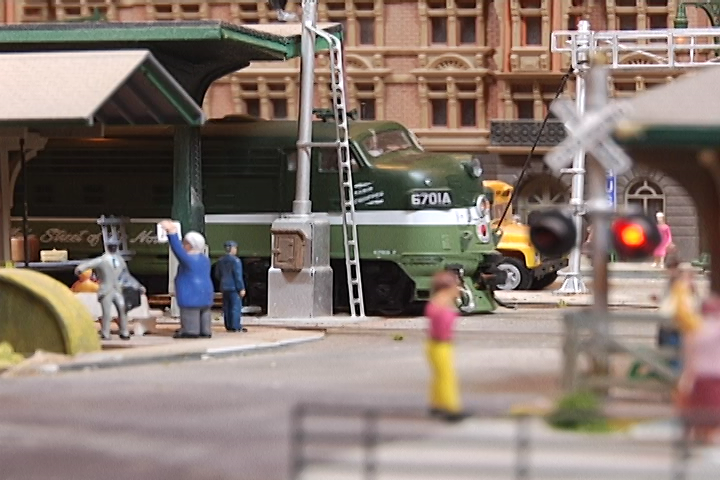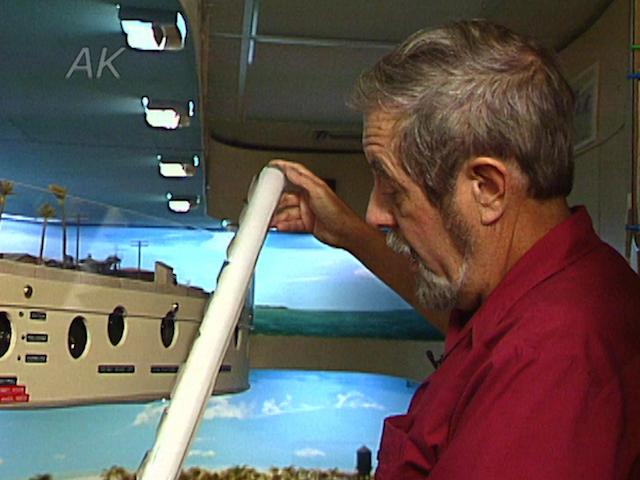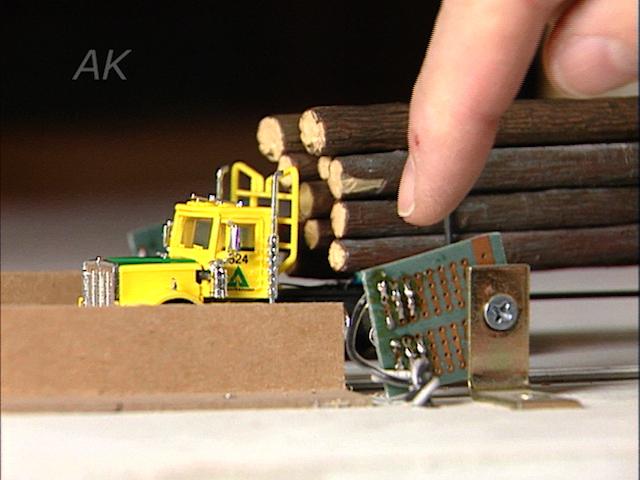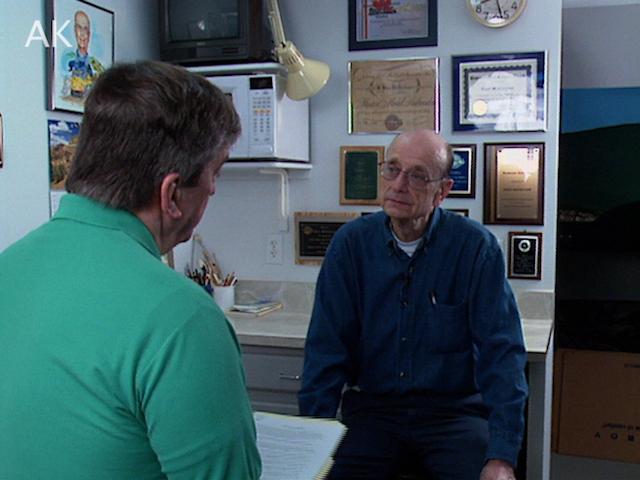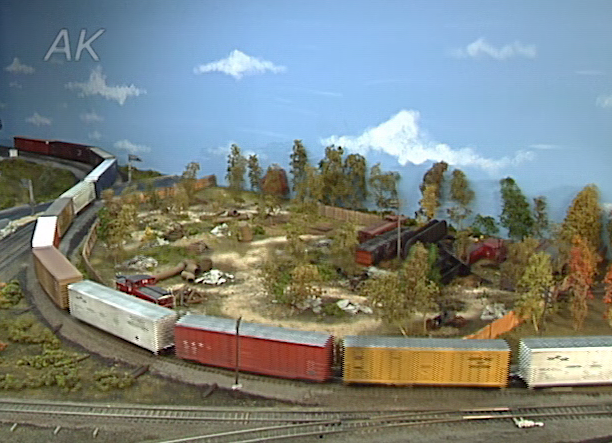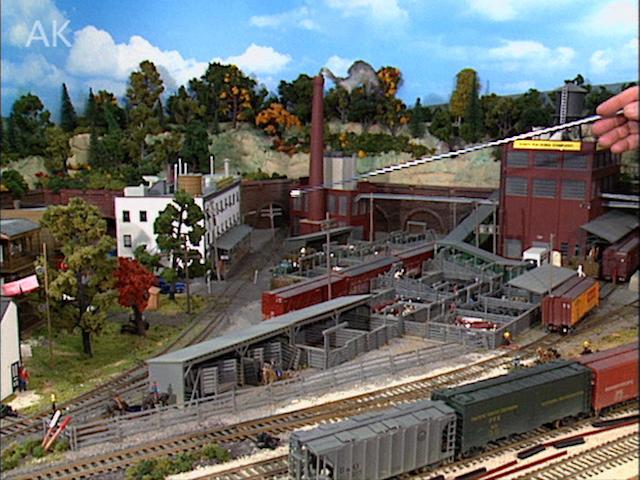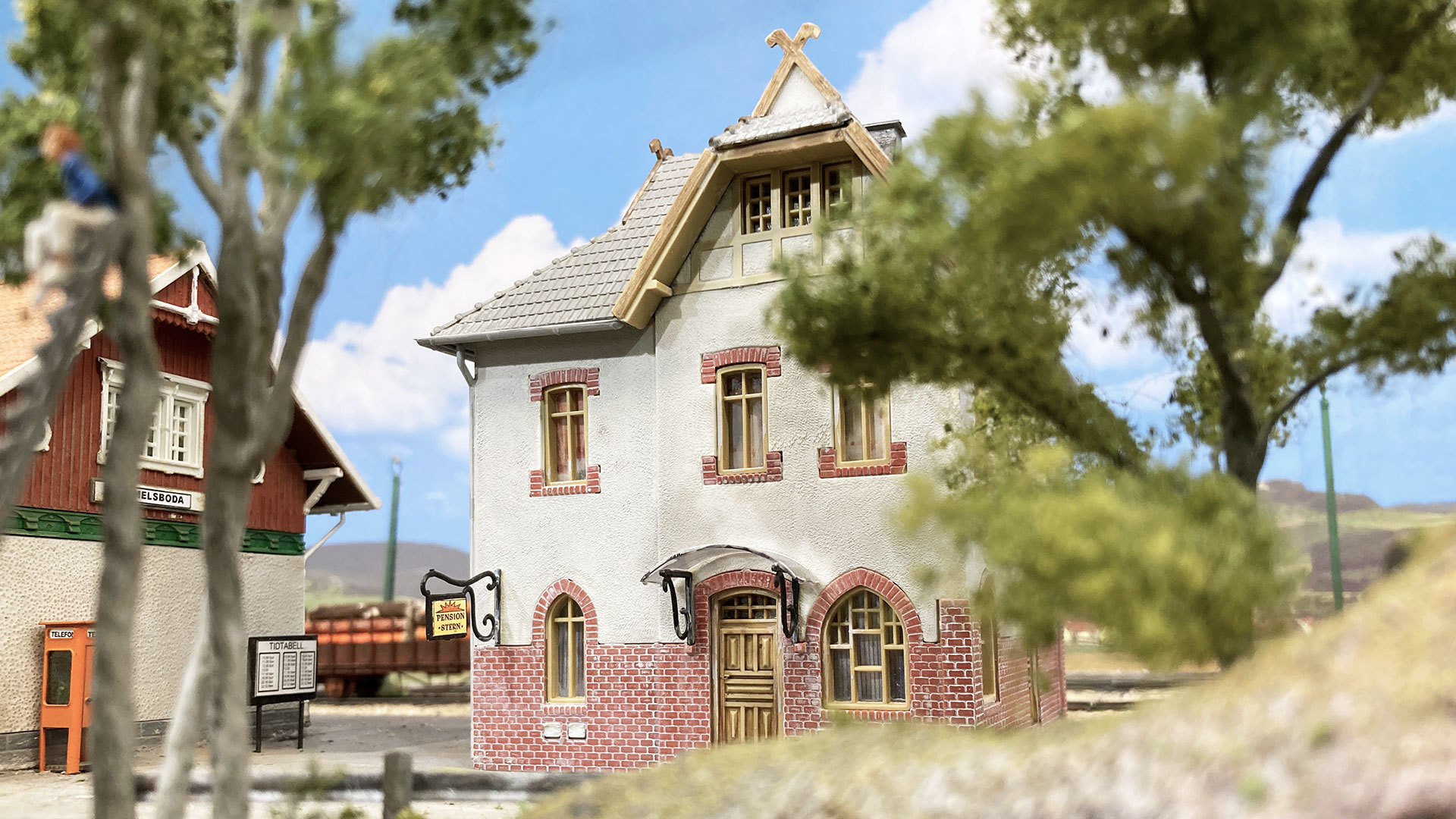
Tracklaying Without Nails: Adhesive Caulk and Topper Tape
Chuck HitchcockLearn how modeler Chuck Hitchcock lays track without nails. Several years ago while visiting some model railroaders for an operating weekend in Lacrosse, Wisconsin, he noticed that they were using a material that wasn’t cork or homosote for roadbed. They used a foam material they called topper tape. He had never heard the term before but learned it was used to insulate camper shells from truck bodies. This material is about 3/16ths of an inch thick with a sticky side on one side and a membrane on the other which can be removed after the roadbed is laid.
The first step to lay the roadbed with this material is to draw a line to represent the end of the roadbed. He then lays the tape along that line. The membrane can be left on if the track is straight because it will keep it straight. When there is a curve, removing the membrane will help the tape curve.
Chuck and the other modelers he observed also used adhesive caulk by Dap. This adhesive caulk is very tacky and allows modelers to lay prefabbed track on a curve by simply pressing down. Before the gluing process, Chuck recommends taking the three foot section of track and clipping off one tie on each end to make room for railroad joiners.
Then he inserts one set of rail joiners on each end. Laying down the adhesive caulk is a simple process, drawing an 1/8th of an inch bead down the length of the track and then spreading out that bead of caulk. He then lays the track along the front edge and presses in place. Allen Keller goes on to discuss the digital command control on Chuck’s Argentine Industrial District layout. For more Allen Keller videos or more on tracklaying, visit our Model Railroad Academy archives.
Explore videos by Chuck Hitchcock
You may be interested in
Premium Membership
Unlock exclusive member content from our industry experts.
- 24/7 Access to Premium Model Railroading Videos, Projects, and Tips
- Step-by-Step Instructional Guides & Layout Plans
- 50% Off Video Downloads Purchased in the Model Railroad Academy Shop
- Access to Ask the Expert Program
Unlock exclusive member content from our industry experts.
- 24/7 Access to Premium Model Railroading Videos, Projects, and Tips
- Step-by-Step Instructional Guides & Layout Plans
- 3 Full-Length Video Downloads to Watch Offline
- 50% Off Video Downloads Purchased in the Model Railroad Academy Shop
- Access to Ask the Expert Program
Gold Membership
$326 Value
Get everything included in Premium plus exclusive Gold Membership benefits.
- 24/7 Access to Premium Model Railroading Videos, Projects, and Tips
- Step-by-Step Instructional Guides & Layout Plans
- 9 Full-Length Video Downloads to Watch Offline
- 2 Full-Length Classes to Keep for Life
- 2 Downloadable Guides
- Discounts on Purchase-to-Own Content in the Model Railroad Academy Shop
- Access to Ask the Expert Program
- Exclusive GOLD LIVE Streaming Events


